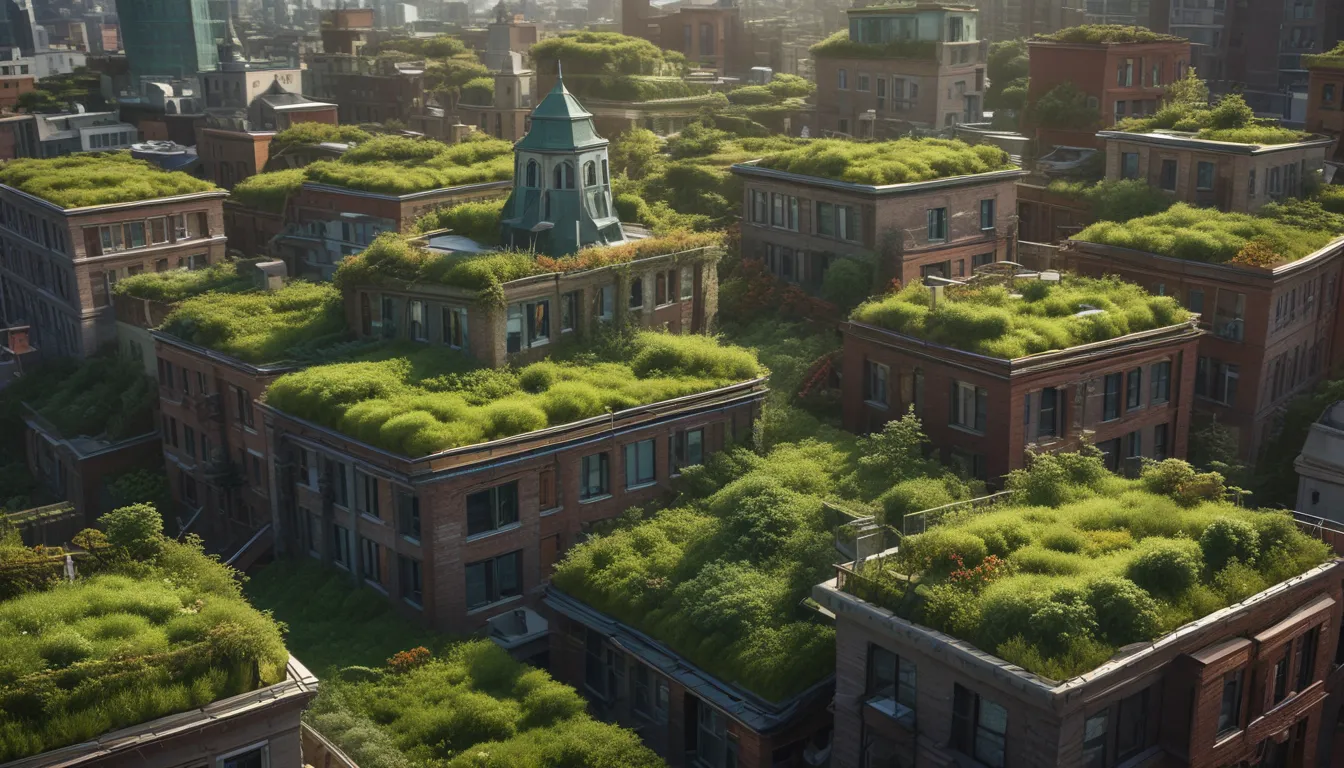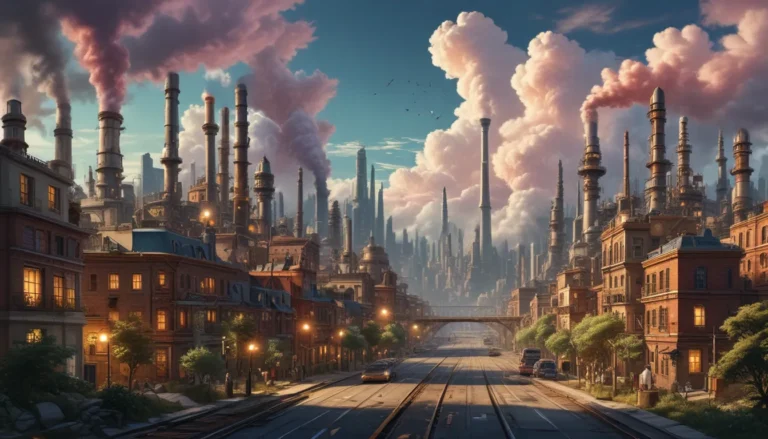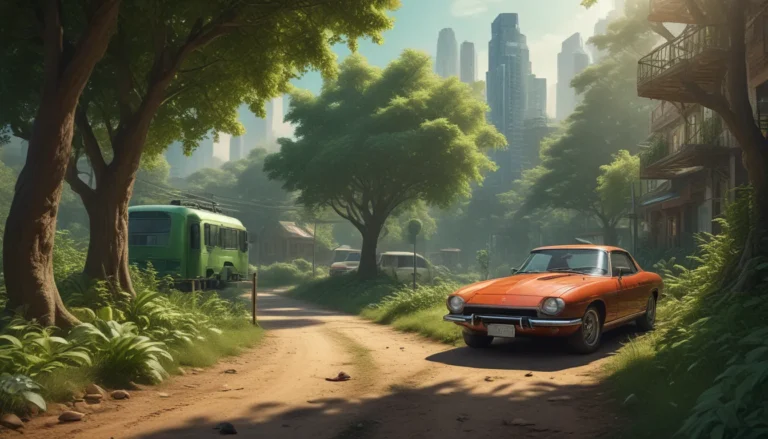A Note About Images: The images used in our articles are for illustration purposes only and may not exactly match the content. They are meant to engage readers, but the text should be relied upon for accurate information.
In the realm of sustainable building practices, one innovative concept is capturing the spotlight: green roofs. Also known as living roofs or vegetated roofs, these rooftop wonders are adorned with lush vegetation. Not only do green roofs add a visually pleasing touch to urban landscapes, but they also bring with them a myriad of benefits spanning from environmental to economic and social realms.
Join us on a journey as we uncover 19 extraordinary facts about green roofs that will inspire you to consider incorporating this eco-friendly solution into your next building project. From combating air pollution to enhancing biodiversity and transforming cities into greener, more sustainable havens, green roofs have the potential to revolutionize our urban spaces.
Unveiling Remarkable Insights:
- Green Roofs Are City Superheroes: These living roofs combat air pollution, cut down energy consumption, and offer serene retreats for city dwellers.
- Beyond Aesthetic Appeal: They not only elevate the visual appeal of buildings but also champion environmental causes like reducing stormwater runoff and propelling sustainable urban development.
Harnessing the Benefits of Green Roofs
1. Enhancing Air Quality
By absorbing and filtering pollutants, green roofs act as natural purifiers, fostering cleaner and healthier urban environments.
2. Curbing Energy Consumption
The layers of vegetation and soil on green roofs provide natural insulation, resulting in substantial energy savings by reducing the need for heating in winter and cooling in summer.
3. Combating Urban Heat Islands
Through heat absorption and reflection, green roofs thwart the urban heat island effect, preventing cities from becoming significantly hotter than their rural surroundings.
4. Fostering Biodiversity
Green roofs offer habitats for birds, insects, and other wildlife, contributing to the preservation of urban biodiversity.
5. Reducing Stormwater Runoff
Acting as natural sponges, the vegetation on green roofs absorbs rainwater, alleviating pressure on drainage systems during heavy downpours.
6. Prolonging Rooftop Lifespan
The protective layer of vegetation and soil shields the underlying roof membrane from UV radiation and temperature fluctuations, extending its durability.
7. Creating Tranquil Retreats
With their verdant foliage and peaceful ambiance, green roofs provide sanctuaries in urban jungles, inviting relaxation and introspection.
8. Improving Water Quality
Green roofs filter pollutants from rainwater, enhancing its quality before it reaches natural water bodies or groundwater reservoirs.
9. Promoting Sound Insulation
The vegetation and soil layers on green roofs absorb sound, mitigating noise pollution, especially in densely populated urban areas.
10. Elevating Property Value
Green roofs increase the market worth of buildings by virtue of their visual appeal, energy efficiency, and positive environmental impact.
11. Supporting Urban Food Production
Certain green roofs are designed for cultivating vegetables, herbs, or fruits, contributing to local food production and bolstering food security in cities.
12. Encouraging Community Engagement
Green roofs serve as communal spaces for social gatherings, educational initiatives, and urban agriculture projects, fostering community bonds and connectivity.
13. Mitigating Greenhouse Gas Emissions
By reducing energy usage and offering a cooling effect, green roofs play a crucial role in combatting climate change by lowering greenhouse gas emissions.
14. Enhancing Aesthetics
The vibrant greenery of green roofs adds beauty and allure to rooftops, rendering them more visually appealing.
15. Boosting Mental Well-Being
The close connection to nature provided by green roofs has a positive impact on mental health, offering urban residents respite from the hustle and bustle of city life.
16. Advocating Sustainable Urban Development
Green roofs form a cornerstone in the establishment of ecologically sound cities, striving for sustainable and responsible development practices.
17. Easing the Heat Load on Buildings
By absorbing and reflecting sunlight, green roofs reduce the heat load on buildings, diminishing the necessity for air conditioning and curbing energy consumption.
18. Serving as Urban Agriculture Sources
From rooftop vegetable gardens to vertical farming, green roofs contribute to urban agriculture, supporting local, sustainable food systems.
19. Igniting Creativity and Innovation
These innovative structures continue to inspire architects, designers, and engineers to conceive new ideas for sustainable urban development.
As we unravel the 19 extraordinary facts about green roofs, we witness the vital role these living structures play in nurturing sustainable urban environments, fostering environmental consciousness, and improving the well-being of both people and the planet.
Embracing a Green Future
Green roofs stand as more than just visually stunning additions to buildings; they embody a wealth of benefits ranging from energy efficiency to air quality improvement and urban agriculture facilitation. By integrating green roofs into our architectural landscape, we craft healthier, more sustainable cities for generations to come.
FAQs
-
What is a green roof?
A green roof is a roof covered partially or entirely with vegetation, typically comprising a waterproofing membrane, root barrier, drainage layer, growing medium, and varying plant species. -
What are the benefits of green roofs?
Green roofs offer a plethora of advantages, including mitigating stormwater runoff, enhancing air quality, combating the urban heat island effect, providing insulation, fostering biodiversity, and creating additional green spaces in urban settings. -
How do green roofs reduce energy consumption?
Green roofs provide insulation, diminishing the requirement for heating in winter and cooling in summer. They also absorb and reflect sunlight, curbing heat absorption in buildings and decreasing the need for air conditioning. -
Can green roofs support plant and animal life?
Indeed, green roofs serve as habitats for a myriad of plant and animal species, bolstering urban biodiversity by providing shelter for birds, insects, and various other creatures. -
Are green roofs suitable for all building types?
While green roofs can be installed on a broad spectrum of structures, including residential, commercial, and industrial buildings, a thorough evaluation of the structural capacity is necessary to ensure the building can bear the additional weight of a green roof.
By delving into the fascinating world of green roofs and understanding their profound impact on urban landscapes, we embark on a journey towards a greener, more sustainable future. Let’s embrace the transformative power of green roofs and pave the way for cities that thrive in harmony with nature.
In Partnership with Knowledge and Exploration
At the core of our mission lies a dedication to delivering authentic, engaging content that captivates and educates. Each tidbit of knowledge on our platform is contributed by individuals like you, offering a diverse array of insights and information. With unwavering commitment to accuracy and reliability, our diligent editors meticulously vet each submission to ensure that the facts we present are not only intriguing but also grounded in authenticity. Explore, learn, and trust in our steadfast pursuit of quality and truth as we delve into the realms of discovery and exploration.






